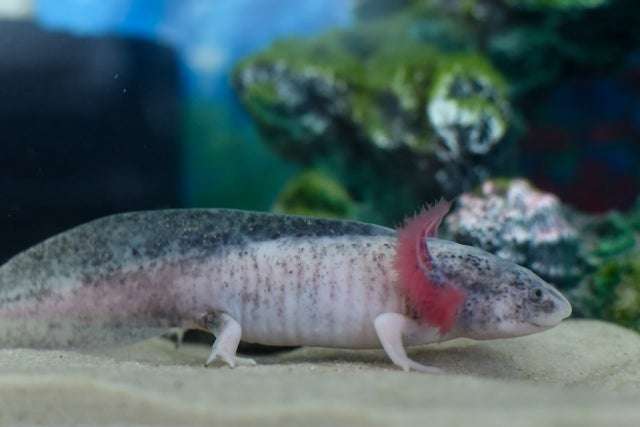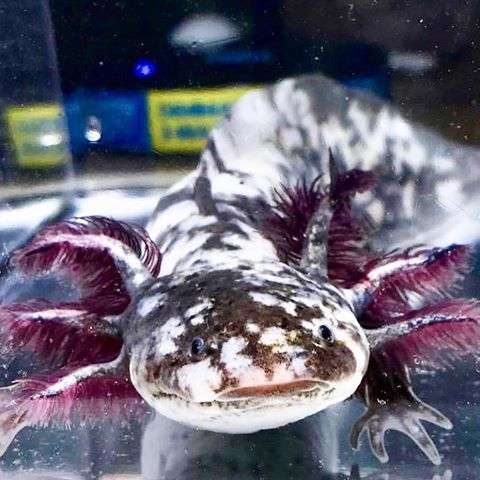
Description
Piebald axolotls have coloration that runs up their sides and midsection. A leucistic axolotl, on the other hand, only loses pigmentation at the top and head of its body. However, some densely spotted varieties of leucistic axolotls are frequently mistaken for a piebald one due to their closeness in appearance.
Leucistic axolotls with spotty coats tend to be paler in colour and have thinner black spots than those with piebald coats. Unlike other common kinds, they are typically heritable through genetics. In some parts of New Zealand, axolotls with a piebald genetic inclusion are rather prevalent.
This particular axolotl subspecies is less common than many others are. As a result, they are sufficiently more expensive in the aquarium trade.
Temperament
It is best to observe a piebald axolotl’s behavior before allowing it into your house.
The fact that they typically engage in activity at night or in areas with poor lighting is one of the behavior’s most intriguing features.
Additionally, you will find certain axolotl species hanging out close to the bottom of your tank because they are clumsy enough. Additionally, a person’s smile may be deceptive. They are rabid carnivores who will consume any animal that would fit in their maw.
These piebald axolotls, however, are also highly hostile to their own forms. Making the younger ones, stay together is particularly difficult since they could act cannibalistic towards one another.
As Pet

Tank Setup
You must keep your piebald axolotls in a cozy tank that closely resembles their natural habitat in order to ensure their good health and general wellbeing.
Tank Size
You need to have adequate space in the tank to provide your axolotl with the greatest care. Therefore, it is preferable to use a 20-gallon tank to care for one species.
Waste generation is significant in piebald axolotls. Giving them considerable space will therefore aid in the stability of the water parameters, exposed to frequent water changes.
Water Parameters
For your piebald axolotl to lead a healthy life in your tank, the water quality must be excellent. The pH of the water must be kept between 6.8 and 8. The pH should be kept between 7 and 7.5 at all times.
Additionally, the water must be between 60 and 65 degrees Fahrenheit. When the tank is completely free of ammonia and nitrite, they are in good condition. A 20% water change on a regular basis is also essential for their wellbeing.
Food & Diet
Maintaining your piebald axolotl’s ideal growth requires a healthy diet. Therefore, in order to keep your piebald axolotls healthy, you must provide them with a rich carnivorous food plate. They primarily consume small fish, worms, insects, and other such items in the wild. You can thus offer them a comparable diet in light of that. So, these foods would be excellent choices for your friends with bald heads.
Bloodworms
Brine shrimp
Daphnia
Pellets
Small fish
You can feed an adult axolotl once every two to three days. A healthy adult can attempt to survive without food for up to 2 weeks.
Table





